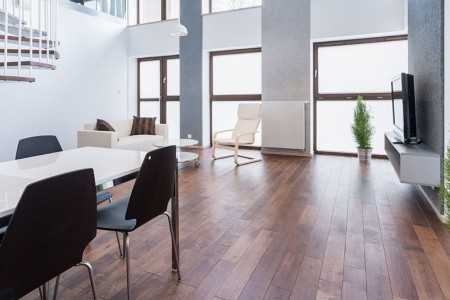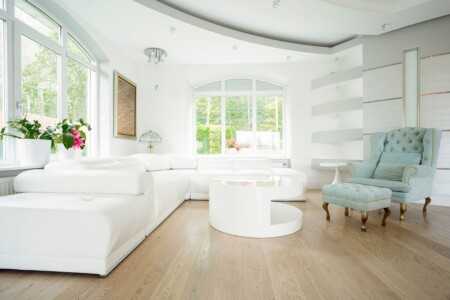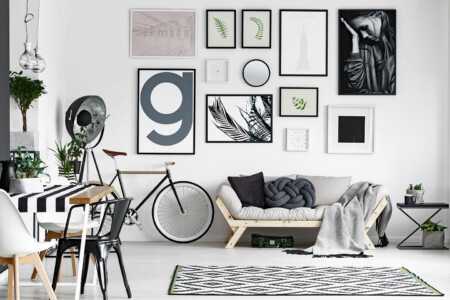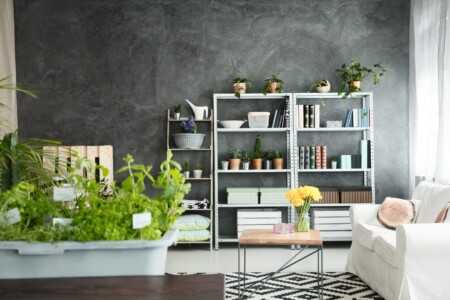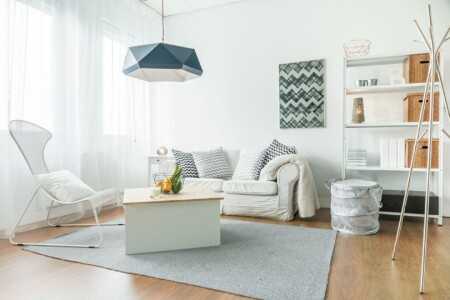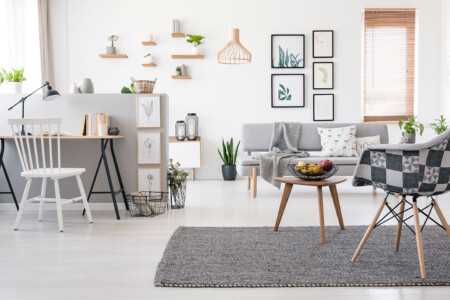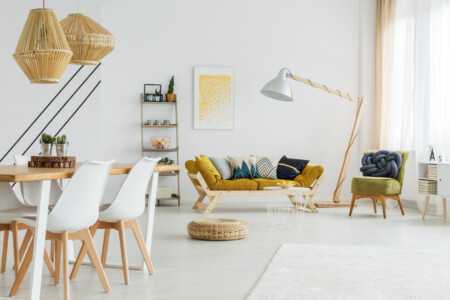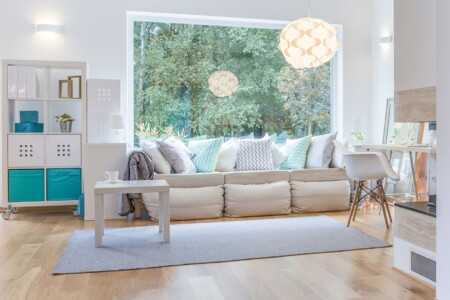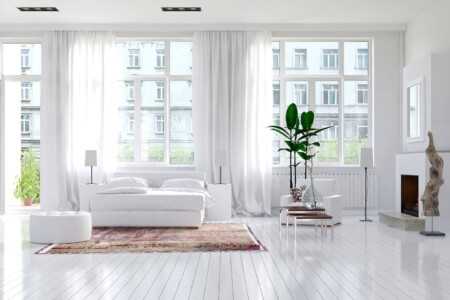How suitable is this 2 people 1-room studio in Hurghada el dahar for school-age children?

Assessing the suitability of a 2-people 1-room studio in Hurghada el dahar for school-age children
Space and layout considerations for school-age children
When evaluating whether a 2-people 1-room studio in Hurghada El Dahar suits school-age children, space is the most immediate concern. Studios designed for two occupants usually emphasize compact living, with a combined sleeping and living area that may create challenges when shared with children who need room to play, study, and rest comfortably.
School-age children require zones that support their education and development. A single-room layout means bedrooms, study areas, and communal spaces overlap, potentially causing distractions during homework time or rest periods. Additionally, limited storage space for school supplies, toys, and children’s belongings can lead to clutter, adding stress on the household.
However, creative organization and furniture choices, such as loft beds with desks underneath or foldable tables, can optimize the available space. If you’re considering this studio for your family, look for units that offer flexible furniture arrangements and built-in storage solutions.
Location benefits of Hurghada el dahar for families
Hurghada El Dahar, the older district of Hurghada, offers unique advantages for families with school-age children. Its proximity to schools, parks, and community amenities enhances daily living convenience.
- Access to Schools: The area hosts various educational institutions ranging from public schools to private language-focused academies. Living in a centrally located studio reduces commute times, making morning routines easier for children.
- Parks and Recreational Areas: Nearby open spaces allow children to play safely outside, an essential factor for physical and social development, especially in compact living environments like a studio apartment.
- Community Facilities: Services such as pediatric clinics, libraries, and child-friendly cafes provide additional support for families residing in El Dahar, helping parents balance work and childcare responsibilities.
Safety and comfort aspects in a compact apartment
Safety is paramount when living with children. A 1-room studio should be childproofed carefully to avoid accidents in tight spaces. Consider the following points:
- Furniture Placement: Avoid sharp edges and easily toppled items. Stick to sturdy, rounded furniture pieces.
- Electrical Outlets: Child safety plugs can prevent electrical hazards common in smaller rooms where outlets might be within easy reach.
- Ventilation and Lighting: Studios often have limited windows. Ensuring good air circulation and adequate natural light affects both comfort and health for your children.
Comfort also includes temperature control. Hurghada’s climate can be hot, so effective air conditioning or fan systems are important to maintain a pleasant indoor environment suitable for children’s rest and activities.
Educational needs within limited space
Children attending school will need a dedicated area for homework and study, even in tight quarters. Since the studio is primarily for two people and not specifically designed for children, the space allocation for studying might be limited.
Parents can introduce compact desks that tuck away when not in use or create a multi-purpose surface that doubles as a dining area and study spot. Lighting in these study zones is critical, ideally with both natural light during the day and focused task lighting in the evenings.
Online learning, which has become more prevalent, requires reliable internet connectivity and electronic devices. Hurghada El Dahar generally offers good network coverage, but the studio must be equipped to support these digital needs.
Social and psychological factors to consider
Living in a small space with school-age children has social and emotional aspects. Crowding can sometimes lead to conflicts, privacy issues, or feelings of confinement. Children at this age benefit from opportunities to socialize and engage in outdoor activities.
Hurghada El Dahar’s community environment can help offset the space limitation by providing accessible social spaces such as playgrounds, community centers, and cultural events. Encouraging children to spend time outside the apartment and participate in group activities helps their social growth.
Final thoughts on practical suitability
While a 2-people 1-room studio in Hurghada El Dahar is primarily designed for a couple or single occupant, with thoughtful adjustments and strategic use of space, it can accommodate school-age children for short or transitional living situations.
Families should weigh the benefits of location, local amenities, and community safety against the physical constraints of the studio’s layout. For long-term comfort and development of school-age children, pairing the apartment with access to outdoor play areas and adequate educational facilities within Hurghada El Dahar makes this setup more feasible.
Ultimately, the decision depends on your family’s lifestyle, adaptability to compact living, and priorities concerning space versus convenience in this vibrant Egyptian locale.
Practical tips for creating a child-friendly environment in compact studio apartments
Maximizing space for safety and comfort
Creating a child-friendly environment in a compact studio apartment demands thoughtful use of every inch. For school-age children, safety and comfort are top priorities, especially in spaces that combine living, sleeping, and play areas into one. Start by evaluating the floor plan and identifying zones within the room that can serve distinct purposes. Using room dividers, shelves, or even curtains helps carve out a dedicated study or play area. This separation encourages focus during homework time and minimizes distractions.
Choose multifunctional furniture to optimize space. For example, a bed with storage drawers underneath or a foldable desk eases clutter, which is crucial when accommodating children’s belongings like books, toys, and school supplies. Rounded-edge furniture can prevent injuries from accidental bumps—a key safety feature in compact environments.
Choosing kid-safe materials and décor
In small apartments, surfaces are often touched frequently, so selecting non-toxic, easy-to-clean materials is essential. Opt for washable paints on walls, durable fabrics for upholstery, and slip-resistant rugs to minimize fall risks. Avoid heavy or sharp décor items placed within children’s reach. Instead, incorporate vibrant, child-friendly colors and patterns that stimulate creativity and provide a cheerful atmosphere.
Wall-mounted shelves keep valuables and breakables out of danger zones, reducing clutter while securing safety. Use lightweight baskets or bins for toy storage, which children can easily handle when tidying up after playtime.
Ensuring adequate lighting and ventilation
Good lighting plays a vital role in a child-friendly apartment, especially where space constraints may limit natural light. Position desks or study areas close to windows for daylight exposure. Supplement natural light with adjustable LED lamps that provide ample illumination for reading and homework without causing eye strain.
Proper ventilation is equally important. Small spaces can quickly become stuffy, affecting children’s concentration and general well-being. Use a compact air purifier or dehumidifier if necessary and keep windows accessible to fresh air. Ensure window guards or locks are installed to prevent accidents without compromising airflow.
Organizing for efficiency and ease
In limited spaces, organization directly supports a clutter-free and child-friendly environment. Implement a system that encourages children to participate in tidying. Label bins and drawers with pictures or words reflecting their contents—for instance, “Books,” “Art Supplies,” or “Toys.” This method improves children’s responsibility and helps maintain the apartment’s order.
Consider vertical storage solutions such as tall shelves or hooks on doors to free up floor space. Use magnetic boards or corkboards above study desks for displaying important school papers, schedules, or reminders. Keep frequently used items within easy reach to foster independence in children managing their belongings.
Balancing play and study areas
School-age children need both study zones and areas for physical activity or relaxation. While space is limited, you can create a dynamic environment that supports both needs. Allocate a corner with soft, durable floor mats or a small bean bag where children can read or unwind. Portable foldable tables or lap desks offer flexible spots for creative projects or homework without consuming permanent space.
Incorporate interactive elements, such as wall stickers that double as educational posters. This way, children engage with learning materials even outside dedicated study time. Encourage tidying toys after playing by using storage that is as playful as the items inside, like colorful boxes or animal-shaped containers.
Maintaining a routine that supports the space
A compact studio apartment functions best when routines are established to maintain a child-friendly environment. Regularly scheduled decluttering sessions prevent build-up of unnecessary items and allow children to develop habits of keeping their space tidy. Encourage nightly preparation to reduce morning chaos—such as organizing school bags and setting out clothes.
Use visual schedules that highlight daily activities including study time, playtime, and rest. These simple reminders support children’s time management skills within a shared living space, minimizing conflicts and fostering harmony.
Safety considerations unique to studio apartments
In a one-room layout, it’s easier for parents to supervise children continuously, which is a significant advantage. However, it also means potential hazards need extra attention. Anchor heavy furniture to walls to prevent tipping. Keep cords from blinds, electronics, or chargers secured and out of reach.
Use safety covers for electrical outlets and ensure that any cleaning products or medicines are stored in locked cabinets. If pets are part of the household, create clear boundaries to keep children safe and maintain hygiene.
Involving children in design choices
Engage kids in personalizing their compact living area to boost their comfort and emotional connection to the space. Allow them to choose colors, decorations, or organizes which helps them feel ownership and responsibility. When children feel their needs are valued, they are more likely to respect shared spaces and follow household routines.
This involvement also sparks creativity, making small areas feel larger through imaginative use of space and decoration.
By integrating these practical tips, you can transform a compact studio apartment into a welcoming and secure environment ideal for school-age children. Thoughtful design and organization ensure that limited square footage supports children’s growth, learning, and play without feeling cramped.
Summary of key points
When considering a 2-people 1-room studio in Hurghada El Dahar for school-age children, it’s important to weigh the space limitations against your family’s daily needs. While the compact size may pose challenges, thoughtful planning and organization can transform the studio into a comfortable, child-friendly home. Prioritizing multipurpose furniture, maximizing vertical storage, and establishing clear zones for study, play, and rest can greatly improve the living experience for children in this setting.
Creating a nurturing environment in a small studio involves more than just fitting furniture; it requires attention to safety, natural lighting, and minimizing distractions to support your child’s learning and development. Small touches like incorporating bright colors, using space dividers to separate activities, and maintaining an uncluttered space enrich daily life and help children feel secure and focused.
Ultimately, a 1-room studio in Hurghada El Dahar can be suitable for school-age children if you actively adapt the environment to meet their educational and emotional needs. With practical strategies and mindful design choices, this compact living space can foster growth, comfort, and productivity for your child despite its size constraints. This approach not only makes the best use of limited space but also supports the wellbeing and routine of school-age children living in smaller homes.
4-bedroom apartment in Magawish for young kids
4-bedroom apartment in Magawish for young kids

